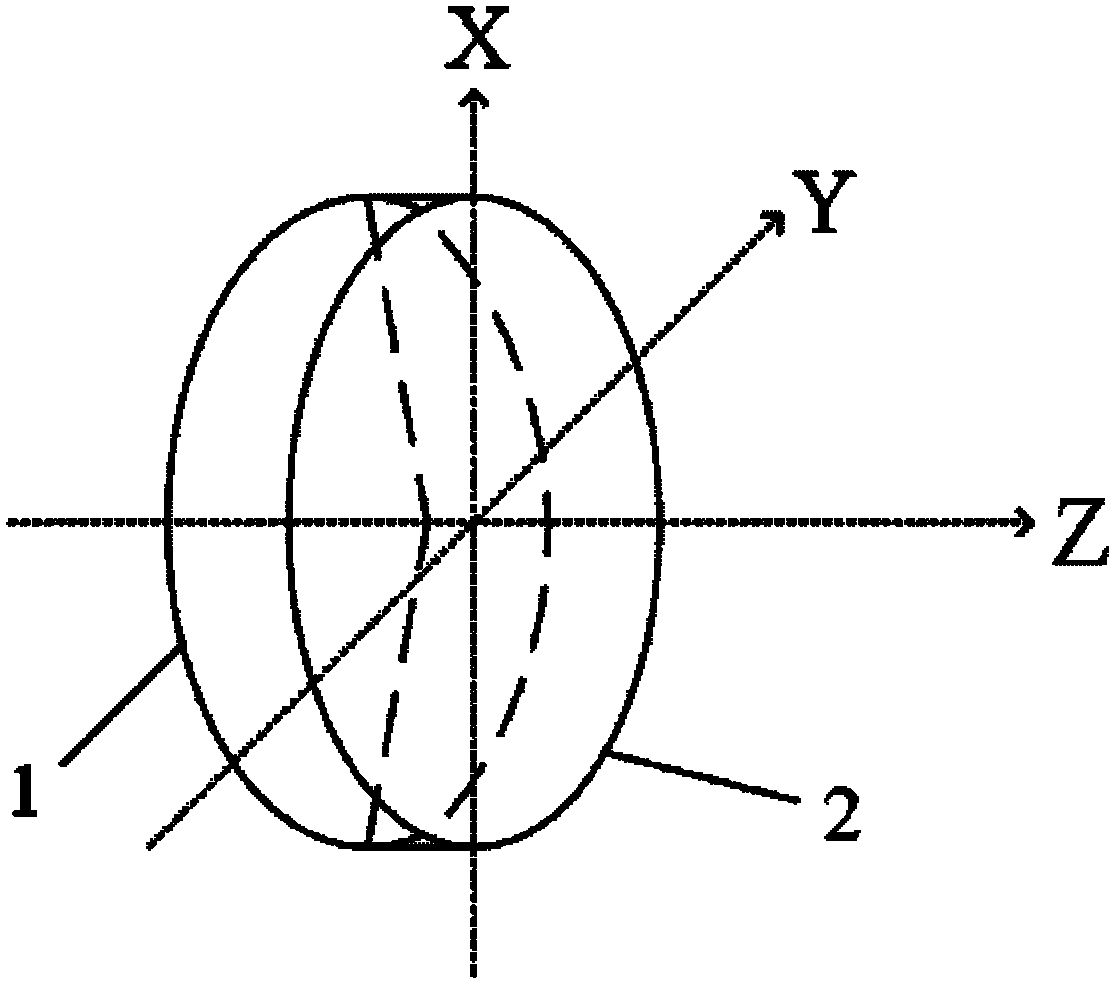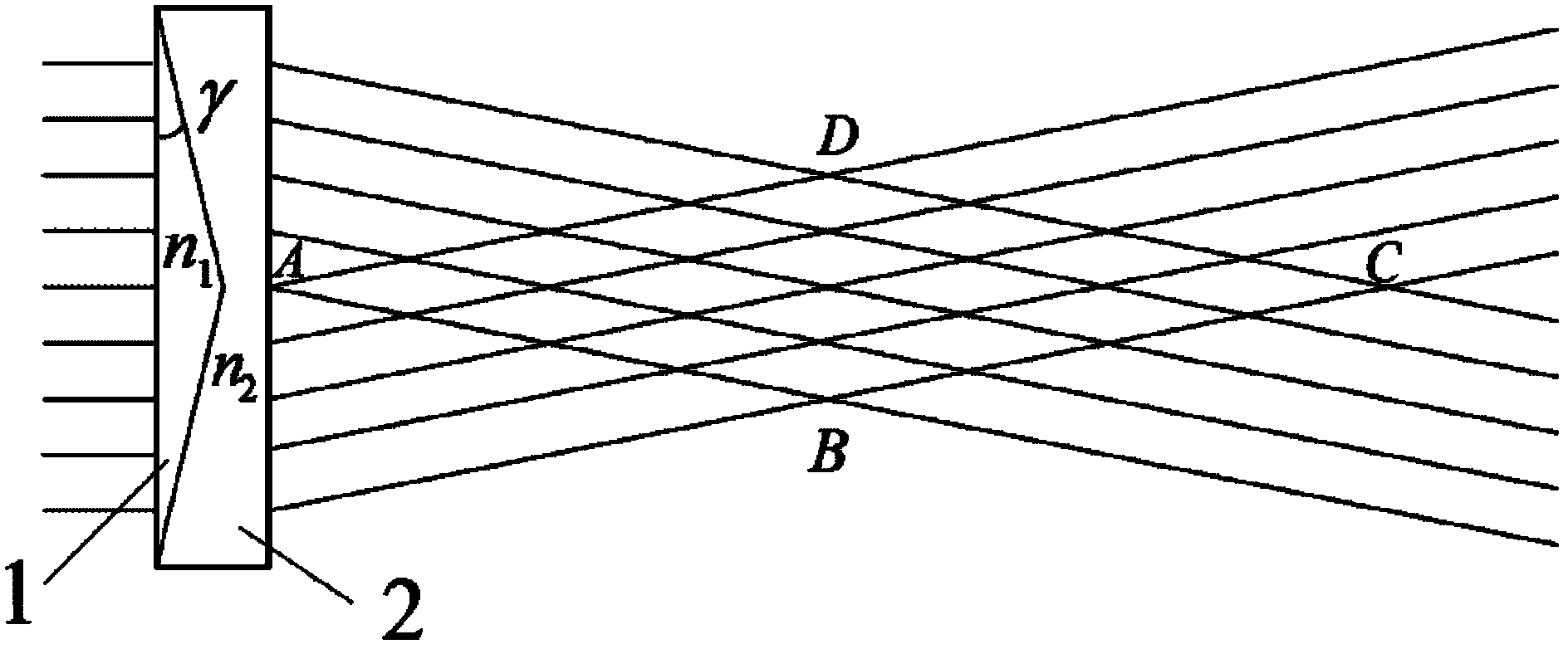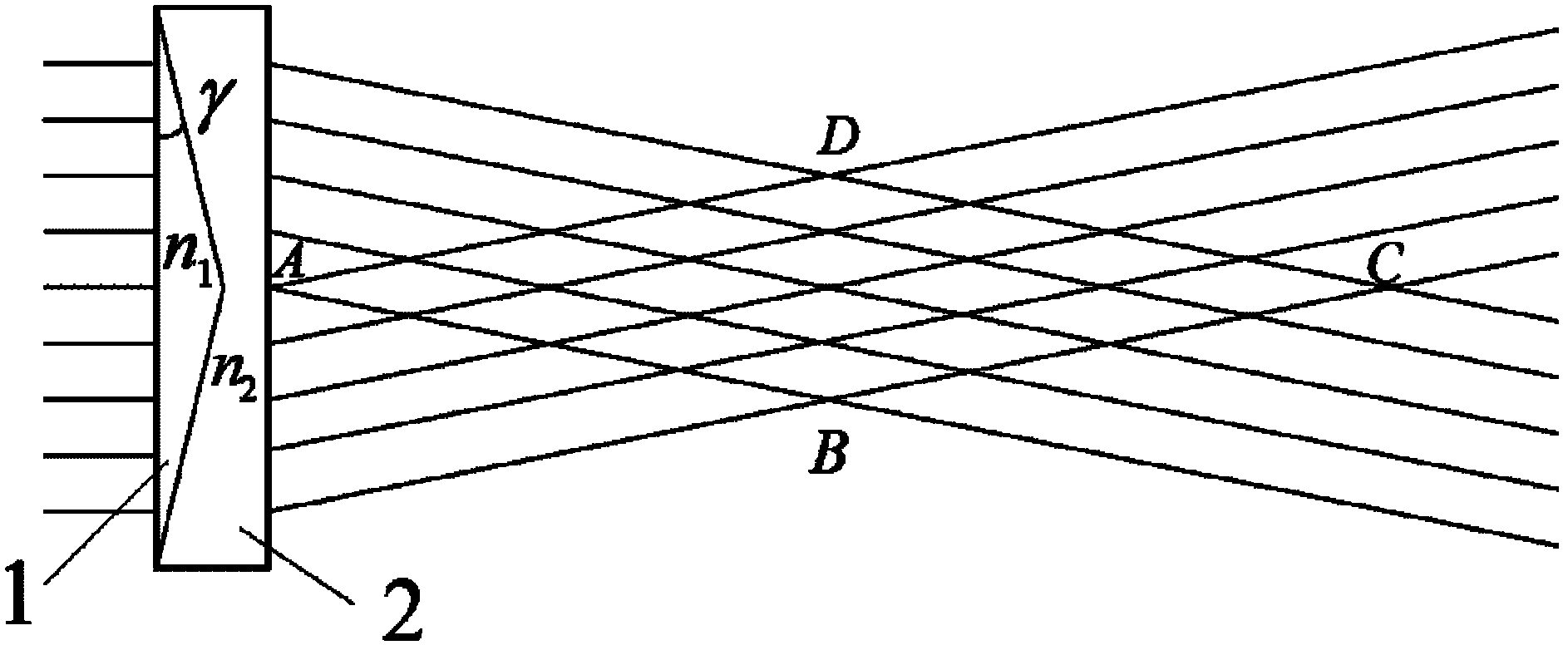Combined cone lens for generating long-distance diffraction-free Bessel beam
A Bessel beam, non-diffraction technology, used in lenses, optics, optical components, etc., can solve the problems of high price, difficult processing, low damage resistance threshold, etc., and achieve low cost, easy component processing, and low price. Effect
- Summary
- Abstract
- Description
- Claims
- Application Information
AI Technical Summary
Problems solved by technology
Method used
Image
Examples
Embodiment Construction
[0013] The structure and principle of the combined axicon lens of the present invention will be further described in detail below in conjunction with the accompanying drawings and examples.
[0014] The present invention produces a combination axicon that produces long-distance non-diffraction Bessel beams, such as Figure 1-2 As shown, it is a rotationally symmetrical structure along the z axis, which includes a positive axicon 1 and a negative axicon 2 made of commonly used optical glass materials. The cone base angle of the axicon 1 is equal to the cone base angle of the negative axicon 2, and the material refractive index of the positive axicon 1 is slightly greater than the material refractive index of the negative axicon 2, specifically, the positive axicon 1 The refractive index of the material is 0.00067-0.26435 greater than that of the negative axicon 2 .
[0015] Such as figure 2 As shown, the base angle of the positive and negative axicons is set to γ, and the re...
PUM
 Login to View More
Login to View More Abstract
Description
Claims
Application Information
 Login to View More
Login to View More - R&D
- Intellectual Property
- Life Sciences
- Materials
- Tech Scout
- Unparalleled Data Quality
- Higher Quality Content
- 60% Fewer Hallucinations
Browse by: Latest US Patents, China's latest patents, Technical Efficacy Thesaurus, Application Domain, Technology Topic, Popular Technical Reports.
© 2025 PatSnap. All rights reserved.Legal|Privacy policy|Modern Slavery Act Transparency Statement|Sitemap|About US| Contact US: help@patsnap.com



